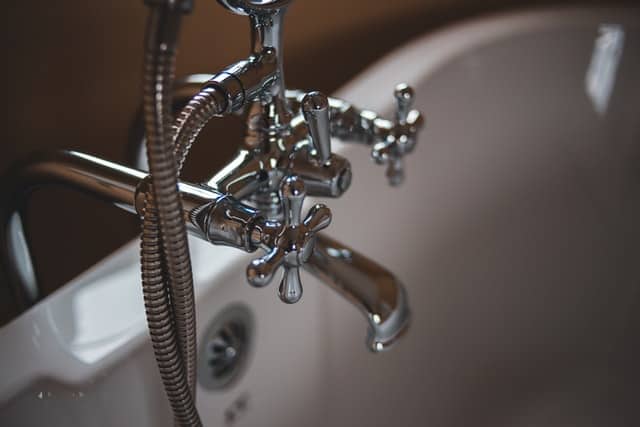This post which follows involving How to Prevent Frozen Pipes is rather insightful. Have a go and draw your own personal results.

All property owners that reside in warm climates have to do their finest to winterize their pipelines. It is something you should do during autumn before deep winter months truly starts. Failure to do so can spell calamity like icy, split, or burst pipes. Here are some convenient winterizing hacks to maintain your plumbing system secured even if the weather outside is terrible.
Turn On the Faucets
When the temperature level drops as well as it appears as if the freezing temperature will certainly last, it will help to turn on your water both inside and outdoors. This will maintain the water flowing via your plumbing systems. On top of that, the activity will decrease the cold procedure. Especially, there's no need to turn it on full force. You'll wind up losing gallons of water this way. Rather, go for concerning 5 drops per minute.
Open Up Cupboard Doors Hiding Plumbing
It would be handy to open up cabinet doors that are camouflaging your pipelines when it's cool outside. They can be someplace in your cooking area or washroom. This will certainly permit the cozy air from your heating system to distribute there. Consequently, you protect against these revealed pipes from freezing. Doing this tiny method can maintain your pipelines cozy and also limit the potentially unsafe end results of freezing temperature levels.
Require Time to Cover Exposed Water Lines
One simple and great hack to heat up freezing pipelines is to wrap them with warm towels. You can additionally make use of pre-soaked towels in hot water, just do not fail to remember to wear safety handwear covers to guard your hands from the warm.
Try a Hair Dryer or Heat Weapon
When your pipelines are almost freezing, your trusty hair dryer or warmth gun is a godsend. If the warm towels do not aid remove any kind of clearing up ice in your pipelines, bowling hot air directly right into them may assist. You might end up harmful your pipelines while attempting to melt the ice.
Turn off Water When Pipes are Frozen
Shut off the major water shutoff right away if you notice that your pipelines are entirely icy or nearly nearing that stage. You will generally locate this in your basement or utility room near the heating unit or the front wall surface closest to the street. Transform it off right now to stop more damage.
With even more water, more ice will certainly stack up, which will at some point lead to rupture pipes. If you are not sure about the state of your pipes this winter, it is best to call a specialist plumber for an evaluation.
All home owners that live in pleasant environments need to do their best to winterize their pipelines. Failing to do so can mean disaster like frozen, cracked, or ruptured pipes. If the warm towels do not aid remove any clearing up ice in your pipes, bowling hot air straight right into them may help. Transform off the primary water shutoff promptly if you discover that your pipes are entirely frozen or almost nearing that phase. With more water, even more ice will certainly load up, which will ultimately lead to burst pipelines.
PREVENT YOUR PIPES FROM FREEZING THIS WINTER
A Leading Cause of Property Damage
When the weather is taking a deep nose dive into the cold dreary days, the risk of your pipes freezing and potentially bursting skyrockets. Unfortunately, during these cold dreary months, burst pipes are the most common denominator for property damage. The pipes that are most at the risk are those that are in areas where it is most cold in your home. For instance, pipes located in interior places such as basements, attics, and your garage. Unfortunately, that doesn’t mean that the pipes running through your cabinets or exterior walls can’t freeze. Good news, however, is that you can do things to help prevent pipes from freezing.
How to Prevent Pipes From Freezing
Once the temperature starts to drop during the winter, you should be taking the proper measures needed to ensure that your pipes stay warm and that there is circulation of water through them. Some steps that experts may recommend could go against your better judgement when it comes to saving water and heat. However, it would go without saying that when expenses are compared, damaged pipes could put a bigger dent in your wallet than a water bill.
What Can I Do?
Keep your garage door closed. This is very important, especially if you have water supply lines running through your garage. Open your kitchen and bathroom cabinets to allow warm air to circulate through them. Allow air circulation throughout your home. Keeping the interior doors open will once again allow the warm air to circulate inside your home. Ensure your thermostat is running the same temperature throughout the night and day. If you plan to be away from home during the cold months, set your temperature no lower than 55° F. This should provide enough heat to keep the pipes warm and prevent any remaining water inside the pipes from freezing. For more of a long-term solution, add insulation to attics, basement, and other crawl spaces around your home. By allowing your faucet to drip, it will alleviate pressure in the system. This is important because the pressure that is created between the blockage and the faucet can potentially cause the pipes to burst. Allowing the faucet to drip will prevent the pressure from building up, therefore keeping the pipes from bursting. Seal any cracks, openings, and crawl spaces around your home to prevent cold air from coming inside. This keeps your pipes-not to mention your home-warmer and less susceptible to issues caused by freezing temperatures. For the pipes in your home that are easily accessible, applying electrical tape to them might prevent them from freezing over. This is a quick fix, as you can apply the tape directly to the pipe. There are two options for heating tapes. One turns on and off by itself when it senses heat is needed. The other type of heating tape needs to be applied when heat is needed and removed when not necessary. If you have exposed pipes in your home, you can check this website to take a look at a few options that would be available at a shop near you.

Do you enjoy more info about How to Prevent Frozen Pipes? Give feedback directly below. We will be glad to know your thoughts about this post. In hopes that you come back again in the near future. Sharing is good. Helping others is fun. Thanks for your time. Visit us again soon.
Contact Us Today